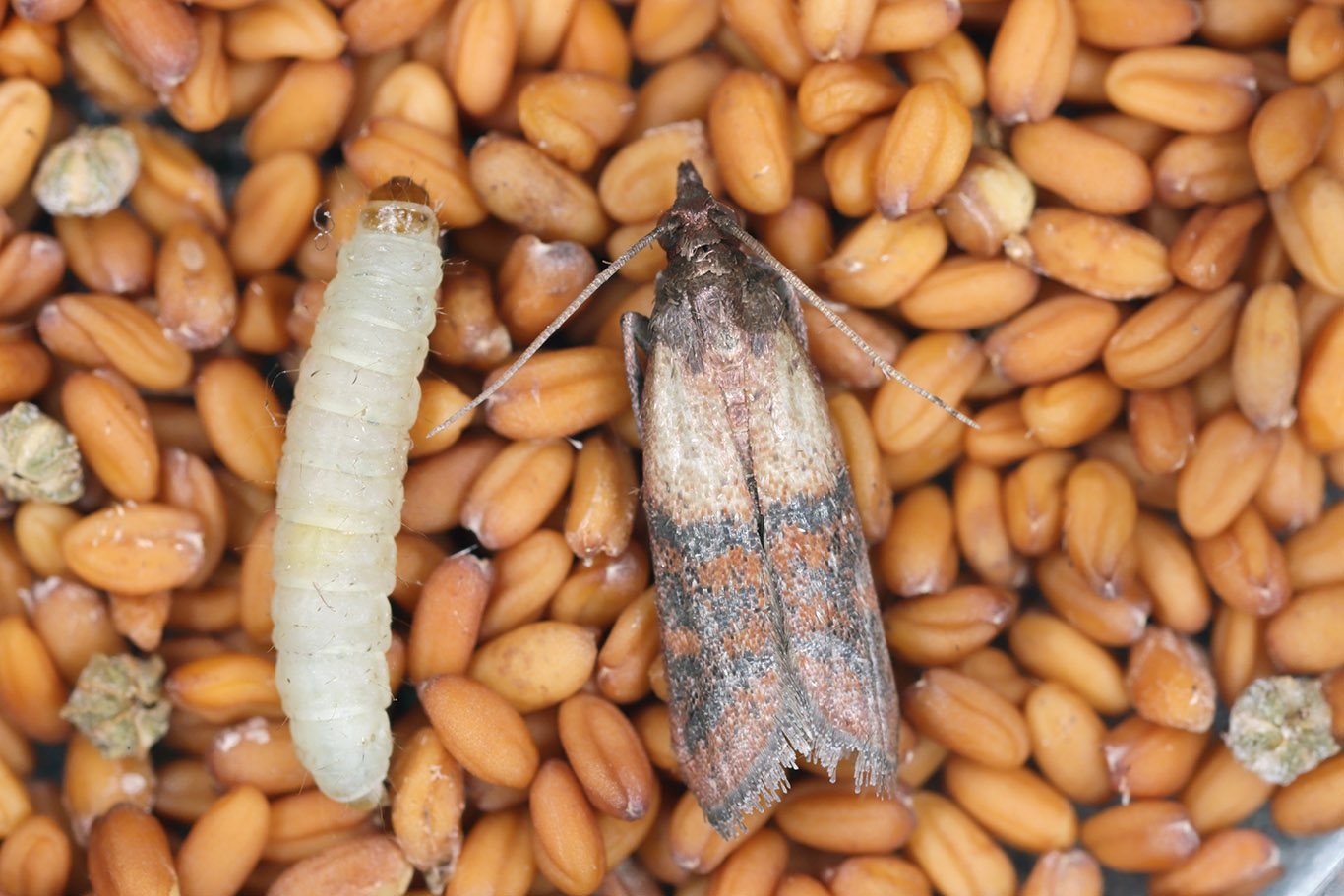Pantry moths may seem like a minor nuisance, but for bird owners, they can become a serious problem. These persistent pests can infiltrate your home, contaminate bird food, and quickly multiply if not addressed. In this article, we’ll cover everything you need to know about pantry moths and birds—including their life cycle, how they get into your home, how to spot an infestation, and most importantly, how to eliminate them. Don’t underestimate a few fluttering moths—learn how to protect your birds and their food from these unwanted invaders.
Pantry Moths and Birds: What Every Owner Needs to Know
The first sign of a pantry moth infestation is often an encounter with an adult moth – and believe us, that one seemingly innocent bug could be a sign of bad things to come.
A little backstory on your new frenemy. These pests may enter your home at any stage in their lifecycle – as eggs, larvae, or adults, often tucked away in sealed bags of food. They especially like bird seed, as it’s made up of natural, unprocessed grains, nuts, and seeds. The bugs in your food bag grow: eggs hatch into larvae, who feed on the nutrient-dense food intended for your birds, and adults burrow out, looking for new places to lay their eggs. Consider this: most adult females can lay around 400 eggs – eggs that will eventually hatch, infesting another vulnerable or unsealed food container. All of this may be already happening when you see that first little moth flitting around your basement light.
Gulp.
So what’s a parront to do?!

How to Get Rid of Pantry Moths in Bird Seed
First of all, don’t worry. There are a number of straightforward, practical steps you can take to prevent moths or combat a current infestation.
Step one: Figure out where they live. Go through all of your dry food products looking for larvae – they resemble worms and grow to about a half an inch long. Also look out for cocoon webbing (which they often spin around the lips of contaminated containers) and bags that look ‘chewed’ (or one might say ‘moth-eaten’). Don’t forget to look in and around your bird’s cage – some pests might be in there if you store the food nearby or if you don’t clean the cage frequently (another huge reason to stay on that cleaning schedule!).
Once you discover where these nasty little guys live, throw away the infested food! You have to be aggressive at this stage, putting the bug-filled bags or boxes into a trash bag that you take to a trash can or dumpster outside. Don’t keep anything that might have bugs in it in your house, as they are great chewers and might escape again. Flour Moth Traps will help catch adult moths already on the loose.
Next, cleaning time! Vacuum everything the contaminated food touched or was near – from plastic containers to shelving units to deep cabinet corners. Those moth eggs are resilient, and you don’t want any hanging around to create Infestation Part II. As in the previous step, be careful to throw away everything that might have bugs in it! Dump or change your vacuum bag outside to prevent any creepy crawlies spilling in your house.
A safe cleaner and some hot, soapy water are your best friends now. Pet Focus is a highly effective, bird-safe cleaning solution. Just apply it to shelves and other surfaces, allow to dry, and then scrub everything again with the hot, soapy water for increased cleanliness. Soak and wash all plastic containers that held contaminated food in hot, soapy water as well.
Stop Pantry Moths Before They Spread: Bird Food Safety Tips
You can avoid all of this inconvenience by taking a few preventative steps. First of all, since panty moths love bird seed, check your new bags when they arrive or before you purchase. If you see any bugs, return the food! Note, that pantry moth larvae and eggs may be difficult to find in a big bag. Signs of pantry moths in seeds include clumping, webbing, or a dusty appearance, often accompanied by small, worm-like larvae or tiny moths fluttering near the food or storage area. Afterwards, keep food in an air-tight container. Avoid buying in bulk unless you have adequate dry storage; just keep enough on hand for two to four weeks.

With a few proactive steps and the right knowledge, you can prevent or eliminate a pantry moth infestation before it becomes a serious issue. Protecting your bird’s food from contamination not only safeguards their health but also saves you time, stress, and money in the long run. By staying vigilant and following these simple tips, you’ll create a cleaner, safer environment—so you can spend less time worrying about pests and more time enjoying your bird.
LEARN MORE:
How to Store Bird Seed and Keep Bugs Out
Nobody wants to see bugs crawling around in their bird's food. Learn how to store bird seed while keeping the pests and insects out of the bird food.
Bird Cage Cleaning Tips
We love our birds but, oh my, they can create a mess! Preserve your sanity and keep bird messes under control with these time-saving, bird cage cleaning tips.
Feeding Your Bird: Seeds vs. Pellets
A bird's diet is crucial for his overall health, so it's important to know the difference between seeds and pellets. Learn which is better for your bird.
Pet Bird Nutrition: Essential Tips for Providing a Balanced Bird Diet
Poor bird nutrition can lead to serious health issues. Learn how to create a balanced bird diet with the right mix of pellets, seeds, and fresh foods.
